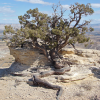corn
Corn is a cereal plant, found throughout the Americas, that yields large grains, or kernels, set in rows on a cob. What we call corn today, however, has traditionally been referred to as maize. For many indigenous cultures in the Americas, corn is symbolic of life itself, and everything from its pollen, to its silky tassels, to its husks has symbolic significance. Thus, it becomes possible for a small boy to take scraps of corn husk and create an imaginary insect that turns into a messenger to the gods, which occurs in a Zuni myth retold by Hillerman as "The Boy Who Made Dragonfly." Even the smallest piece of this special plant is powerful enough to not only sustain but also to generate life.
Several of the other ceremonials described in Hillerman's fiction also use corn, its husks and pollen, in order to complete the rituals as per the Navajo Way as the Holy People prescribed.








